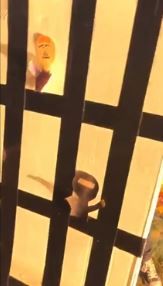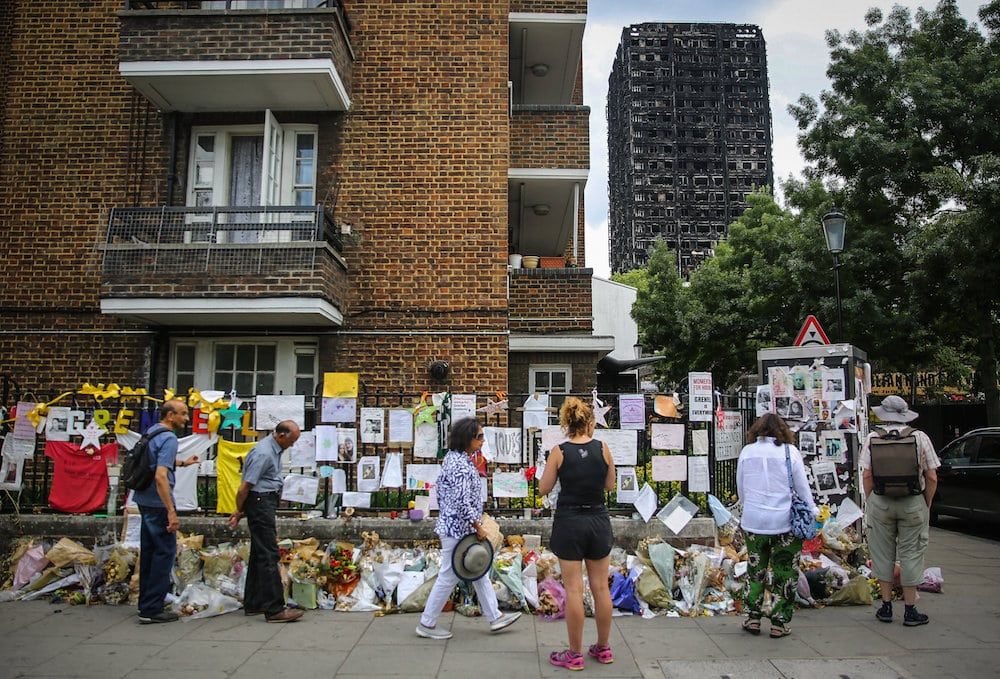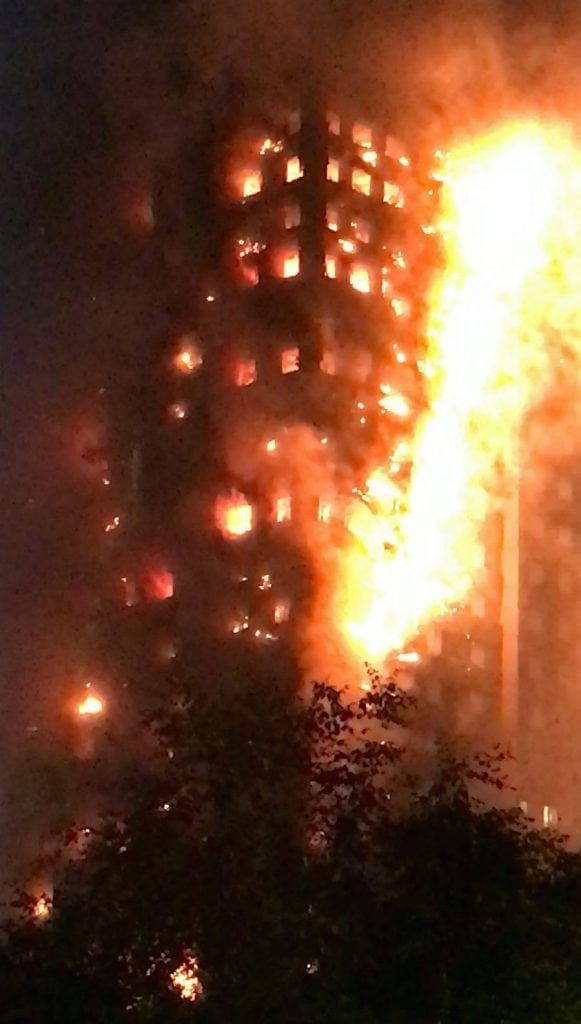A property millionaire denies sharing a video to social media that showed a burning effigy of Grenfell Tower.
Paul Bussetti, 46, is accused of sending the video which went viral on WhatsApp and uploading it to YouTube.
Today a court heard that Bussetti is the only person to be tried in connection with a video clip that caused outrage as it was shared over social media.
The video showing a burning effigy of the tower block in which 72 died as people were heard joking and laughing at a bonfire party.
As the model of the housing block was burnt, people could be heard mocking Grenfell Tower victims, calling out: ‘help me, help me.’
The incident was filmed and posted online on November 3, leading to public outcry and a police investigation.
Bussetti appeared before Westminster Magistrates’ Court charged with two counts of breaching section 127 of the Communications Act 2003.
These were sending “grossly offensive” content via WhatsApp and causing the content to be sent via YouTube.
Prosecuting, Philip Stott said Bussetti admits sharing the video on WhatsApp on November 3 last year, but denies being responsible for the clip ending up on YouTube:
“We don’t allege he personally uploaded it to YouTube, but by sending it to another he caused it to go on YouTube and go viral.”
Defending, Look-Chih Wang said: “The actual video on YouTube is in dispute.”
When asked if he considered the content as grossly offensive, Mr Wang said context was a factor, arguing it was not offensive as it was a “joke.”
He referred to case law “that a joke, no matter how distasteful, it was not Parliament’s intention to criminalise such actions or stigmatise a person for this.”

Mr Wang said: “The content depends on the context where it was sent.
“You are aware of the case where someone made a joke on Twitter.
“A joke, no matter how offensive, it is not a crime.
“It was communicated via Whatsapp. It cannot be considered a public communications network unlike Facebook or Instagram.
“These groups are limited to 265 users per group.”
Mr Wang said Bussetti denies responsibility for the YouTube posting, and may also argue that sharing a video on WhatsApp does not mean he made the clip public.
“We may be seeking to argue WhatsApp can’t be considered to be a public electronic communication network, as opposed to Facebook, Twitter, and Instagram,” he said.
Bussetti is the co-owner of an £8 million apartment building in Clapham and is believed to have inherited a fortune from his father who was murdered in 2002.
He is also one of three people suspended from South Norwood Conservative Club over the incident.
Dressed smartly in a black suit with a white shirt, Bussetti only spoke to confirm his name, address and pleas of not guilty.
“It is not in dispute that Mr Bussetti sent the footage of the video to two groups within the WhatsApp group chat, one with six or eight people and the other with 14 or 15”, said Mr Wang, explaining that people in the groups Bussetti shared the video with would be called as witnesses in arguing whether Bussetti had caused offence.
Chief Magistrate Emma Arbuthnot said: “It is not in dispute that the defendant was present at the scene.
“The trial is partly technical and partly factual.
“You will attend your trial on July 29 at the time set or face rearrest.”
Bussetti of South Norwood in south east London faces trial at the same court.

Philip Stott confirmed that no one else is being prosecuted over the
bonfire incident.
Bussetti, from South Norwood, denies two charges under the 2003 Communications Act.
He was charged on April 12 while five other men have men had been arrested and a seventh interviewed under caution.

A total of 72 people died as a result of the tragedy at the North Kensington block in west London on June 14, 2017.
As yet nobody has been charged in connection with the disaster. Scotland Yard last month confirmed that no criminal charges are likely to be brought for at least two years, until after the final report of the inquiry, the second phase of which is unlikely to begin this year.
Labour’s Shadow Housing Minister Sarah Jones recently revealed that 85% of blocks with the same “highly flammable cladding” that spread the blaze in the Kensington housing estate on 14 June 2017, are still covered with it.
By Ben Gelblum and Daniel Hammond

